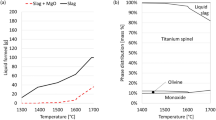Abstract
JRC-ETHEL has chosen as the principle objective of its research program the improvement of protection measures in facilities handling large amounts of tritium. Technically, this involves investigating and assessing tritium propagation modes and transfer pathways in materials, components, equipment, and process plants.
The experimental research work to be performed in ETHEL will basically aim at investigating:
-
•Loss mechanisms by identifying physico-chemical parameters such as adsorption/desorption rates, permeation rates, leakages of materials for fusion reactors and the effects of potential remedies like permeation barriers under process-like conditions.
-
•Multiple containment systems and fluid clean-up concepts under normal and accidental conditions.
-
•Methods for solid waste handling, treatment, conditioning, and final disposal.
-
•Techniques for tritium control, monitoring, and surveillance over the whole concentration range during both normal and accidental conditions and maintenance activities.
With the availability of two “climate chambers,” the small and large caissons of 5 and 350 m3 volume respectively, ETHEL is especially suited for benchmark and scale-up tests of many kinds of large gas volumes treatment system. This will help to close the gap between laboratory-scale results and plant-size design specifications and represents an important source of information for designers (NET, ITER) and regulatory authorities.
Similar content being viewed by others
References
G. Vassalloet al. (1992). Design, Construction, Commissioning Licensing and Future Operational Aspects of the European Tritium Handling Experimental Laboratory, Fusion Technology 21, No. 2, Part 2, pp. 235–240.
A. Perujoet al. (1992). ETHEL 001, a Versatile Facility for Plasma-Material Interaction Research Proc. of IAEA Tech.Com.Meeting on Atomic and Molecular Data for Fusion ReactorTechnology, Oct. 12–16 Cadarache, IAEA Technical Report-ORA/PRO 37206.
K. S. Forceyet al. (1993). The Formation of Tritium Permeation Barriers by CVDJ. Nucl. Mater. Oct. 200, 417–420.
A. Perujoet al. (1992). Tritium Permeation Through Engineering Components: JET Bellows Experiment/17th Symposium on Fusion Technology (SOFT), Sept. 14–18, Roma (I)-ORA 36996.
G. Pieriniet al. Method and Device for Purifying a Gas Containing Hydrogen Isotopes. Canadian Patent No. 1314236, March 9, 1993.
H. Dworschak and G. Modica Procedure and Device for Decomposition of Tritiated Water and Recovery of Elemental Tritium. Patent No. 87994, Luxembourg, March 15, 1993.
F. Mannoneet al. (1992). ETHEL's Systems and Facilities for Safe Management of Tritiated Wastes. Fusion Technology 21, No. 2, Part 2, pp. 714–718.
Author information
Authors and Affiliations
Rights and permissions
About this article
Cite this article
Dworschak, H. The JRC experimental program. J Fusion Energ 12, 27–34 (1993). https://doi.org/10.1007/BF01059351
Issue Date:
DOI: https://doi.org/10.1007/BF01059351




